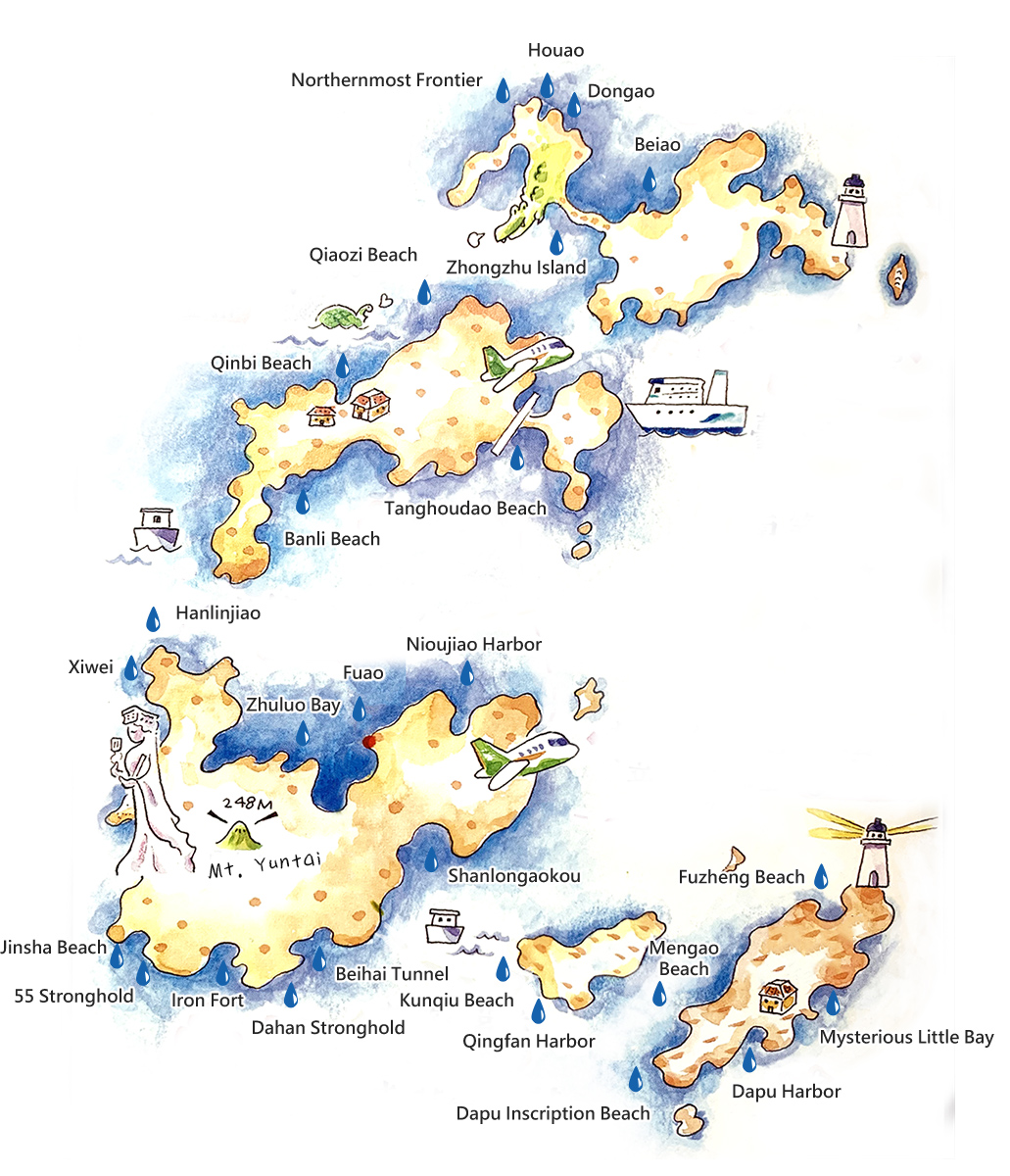The precious Blue Tears can be appreciated from May to September annually, although this can only happen through luck, not plans. If you want to watch Blue Tears, leave your trip to Matsu some extra days with a relaxed and happy mindset. With the right tidal time and winds, your chance of seeing such treasures of the nature will greatly improve.
To increase your chance of seeing Blue Tears in the tunnel at night, no light pollution will be allowed. But this can make the journey more risky, too. To ensure your own safety, do wear life jackets all the way through, and never stand up or play around. Follow the staff member’s instructions.
Blue Tears Map

Watch videos:Tear in Blue Micro Film

-
Sea sparkle
The bioluminescent sea (sea sparkle) in the Matsu archipelago is a famous tourist attraction with a romantic name – blue tears. Noctiluca scintillans is known to be the dominant bioluminescent dinoflagellate in the Matsu archipelago. Noctiluca scintillans are divided into green and red populations by mode of nutrition in the world. The former has a photosynthetic endosymbiont, Protoeuglena noctilucae, and the latter, i.e., the population found in Matsu, is exclusively phagotrophic. Its blooms are irregular and seem to be a response to the unpredictable climatic factors and typically occur in spring and summer and result in viscous, red, surface waters.
The seasonal variations of N. scintillans, accompanied by hydrographic, biological and meteorological data, were record by a daily census during the bloom season and twice a week thereafter in 2016. We found that N. scintillans in the Matsu archipelago disappeared when the sea water temperature exceeded 27 °C. Diatoms suffer high grazing pressure from N. scintillans during the flood season, when diatoms are most abundant. The Matsu archipelago is located along the Chinese coast near the mouth of the Minjiang River. Its diluted water, which influences the thermohaline properties of the seawater has a seasonal character, being most apparent during the flood season in April, May and June, and least apparent during the non-flood season from July to the following March. The wind speed and wind direction also can influence on the accumulation of N. scintillans cells.